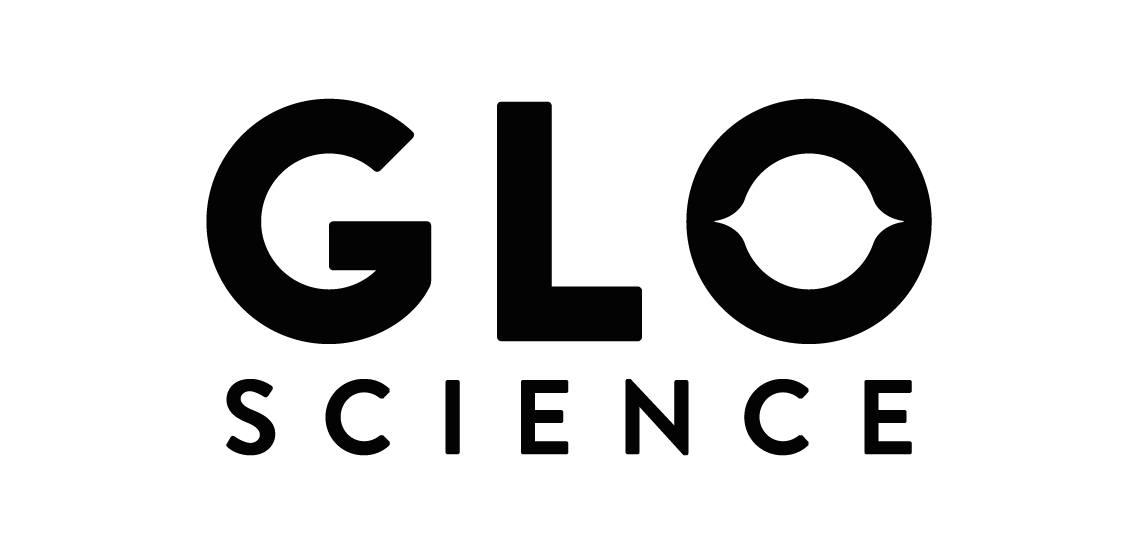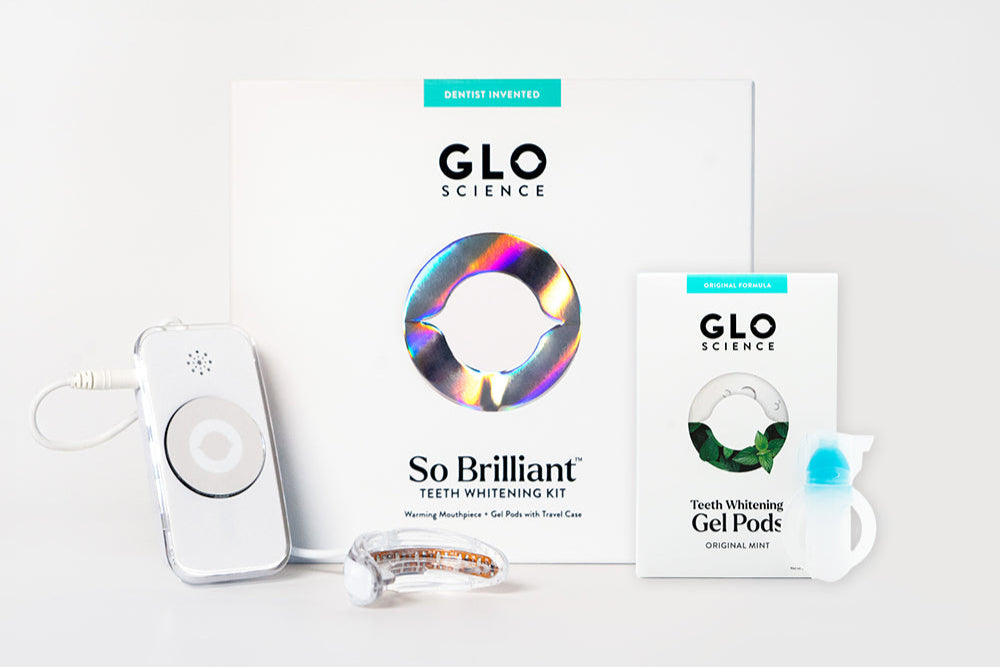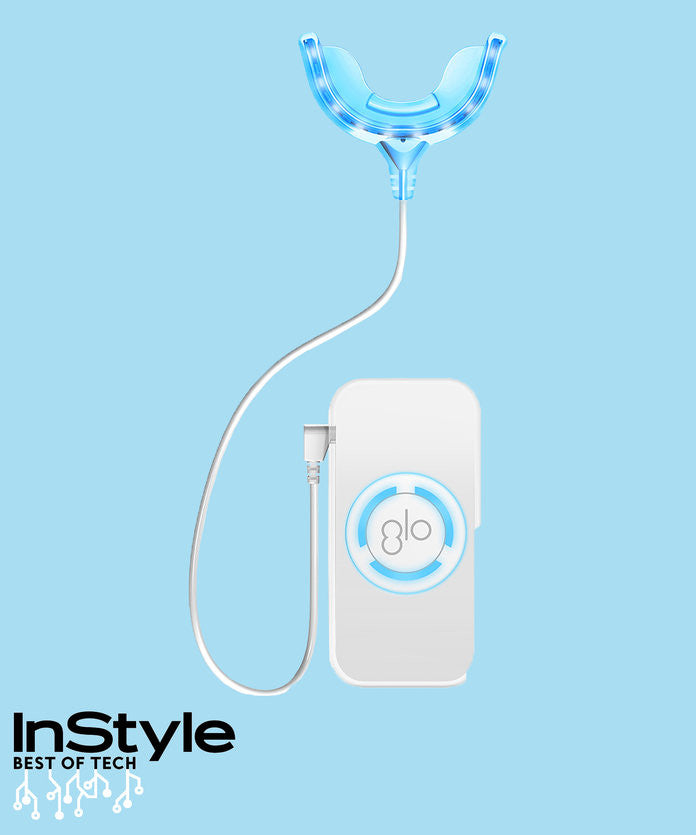
Is Teeth Whitening Safe? The Definitive Answer
Are you looking to whiten your teeth? You’re in good company; a recent survey showed that 80% of Americans aged 18-49 wish they had whiter teeth and that 6 out of 10 people believe that having whiter teeth would make them more confident. Thanks to incredible advances in whitening technology, getting that bright smile you’ve always dreamed of is safer and more accessible than ever.
Still, some people want whiter teeth but are hesitant to whiten them for various reasons. Whether for fear of pain, tooth damage, or the unknown, whitening can be intimidating for those unfamiliar with it. Here, we’ll lay out common types of teeth whitening, teeth whitening applications, teeth whitening ingredients, and debunk the safety myths associated with teeth whitening.
Types of Teeth Whitening
There are several types of teeth whitening. To appropriately answer the question of safety, one must first understand the nuances and differences between different aspects of teeth whitening. Several factors affect the security of your teeth whitening, such as:
-Chemicals are used to whiten teeth. Chemical teeth whitening is common and often referred to as teeth bleaching. Hydrogen peroxide is considered the gold standard of teeth whitening, as it is rigorously tested to be effective and safe. However, other ingredients like carbamide monoxide have been used less frequently and have not been proven safe. In addition to the type of chemical used to whiten teeth, you would need to consider the concentration of the chemical agent. Low concentrations of chemical whitening agents are typically safer, while higher concentrations are more dangerous and cause pain and damage.
-Mechanical whitening is another common type of teeth whitening. Thoroughly brushing or buffing teeth with abrasive baking soda helps scrub surface stains from teeth. This type of teeth whitening is less effective but primarily considered safe.
-Light or Heat. While light and heat do not whiten on their own, both light and heat can amplify the results of a chemical whitening agent, like hydrogen peroxide.
-Combining types of teeth whitening. As with any dental procedure, close attention should be paid to combining various teeth whitening elements, like a chemical whitening agent, a mechanical component, and light or heat. When using more than one whitening method and extending the time of application or intensity, results can vary.
Teeth Whitening Applications (Device, Strips, etc.)
There are many teeth whitening applications available to enhance your smile. Each has its benefits and safety risks, from teeth whitening strips to whitening devices and gels.
Teeth Whitening Strips
Teeth-whitening strips are a standard method of teeth whitening. These convenient strips adhere to teeth with a sticky whitening gel that penetrates the enamel to whiten. While they can be easy to apply, teeth whitening strips are one-size-fits-all. This means that they can’t be customized to fit your mouth, which may allow the whitening gel to coat the gum line causing pain and sensitivity. There will likely not be severe damage caused by whitening strips, but there is a risk of pain with this whitening method.
Whitening Gel
Teeth bleaching, or chemical teeth whitening gel, contains a chemical whitening agent that removes stains from the enamel and reveals a whiter shade. This effective teeth whitening method varies in safety based on the active ingredient. Hydrogen peroxide is the most commonly used and most effective whitening ingredient. To ensure proper safety, pay close attention to the instructions to avoid leaving whitening gel on for too long. Additionally, you should select a sensitivity-free hydrogen peroxide gel to decrease the risk of damaging your enamel. Finally, avoid putting gel on gums, which may cause pain or sensitivity.
Baking Soda for Teeth Whitening
Baking soda is a gentle abrasive agent that can buff away surface stains to reveal whiter enamel below. This method has been used to whiten teeth naturally for decades and is relatively safe. However, this method is best when looking to thoroughly clean and gently whiten, as baking soda will not whiten enamel dramatically. To prevent damaging enamel, begin with a small amount of baking soda and brush your teeth in circular motions. If irritation or sensitivity occurs, discontinue use.
Teeth Whitening Pens
Teeth whitening pens are a handy on-the-go whitening method. They combine a viscous whitening gel with a soft brush top to apply directly to your teeth. Depending on the formula, these pens are very safe as they typically are created with low-concentration whitening ingredients and adhere to teeth for a tiny amount of time. However, to prevent wear on enamel and the risk of pain, apply only to avoid the gumline.
Teeth Whitening Devices
Teeth whitening devices typically whiten more quickly than other methods, as they pair a whitening gel with light or heat device to amplify whitening. Several kinds of devices are on the market, but not all are created equal. To ensure your safety while whitening, steer clear of knock-off devices on Amazon or other retailers. Instead, opt for a dentist-designed device sold by a licensed dentist or reputable site. This will ensure that the whitening gel is correctly formulated and that the light and heat are intense enough to whiten effectively without damaging your enamel.
Ingredients
Numerous ingredients have whitening effects. Here’s a quick overview of common whitening ingredients:
Hydrogen Peroxide
As stated previously, hydrogen peroxide is the gold standard for whitening. Dentists recommend using low-concentration hydrogen peroxide as it whitens effectively and breaks down cleanly into water and oxygen, so there is less risk of irritation or pain.
Carbamide Peroxide
Carbamide peroxide is gaining popularity in whitening. This compound containing hydrogen peroxide and urea is largely considered safe and effective. Still, it has not been used as long as hydrogen peroxide has, so you may want to try hydrogen peroxide to prevent risk. As with all ingredients, be sure to chat with your dentist before using a carbamide peroxide gel and discontinue use if irritation occurs.
PAP+
Phthalimidoperoxycaproic acid, or PAP+, is a non-peroxide whitening agent that is becoming more common. While hydrogen peroxide has a long record of safely brightening enamel, PAP has not been widely studied or proven safe. In addition, some studies have shown that PAP+ causes damage to the enamel, so be wary when using this ingredient.
Baking Soda
Baking soda is a household staple that has been used to whiten for decades. This gentle-yet-abrasive powder can be used to buff the teeth and polish away surface stains. While the other whitening agents chemically treat enamel, baking soda works as a mechanical element to scrub the tooth's surface to lift stains. Baking soda is safe but not super effective at whitening and is best for very subtle brightening over a long period.
Conclusion
While there are many ways to whiten teeth, it’s clear that one mode is the clear winner. Combining a professionally-formulated hydrogen peroxide whitening formula and an illuminating heat and light device provides excellent whitening results safely and without harmful side effects. Isn’t that something to smile about?







